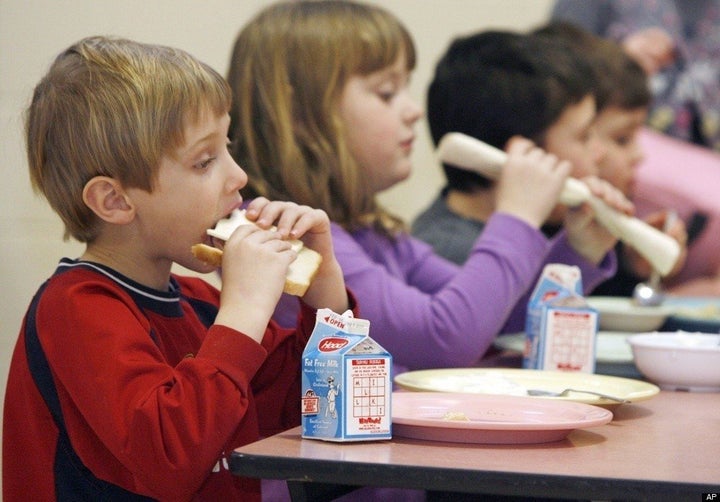
Cristina Stainkamp, 42, a stay-at-home mother of three, describes how terrifying it was when her first child, then 18-months, went into anaphylactic shock from a single drop of milk.
"In a matter of minutes, he was covered in hives head to toe," she told The Huffington Post. "His eyes were like slits, swollen shut; his ears were like Dumbo, swollen and purple; and his lips were turning blue." Her son was vomiting and couldn't breathe and had to be rushed to the hospital where an ER doctor saved his life.
Life-threatening reactions to something as seemingly benign as milk may be more common than previously thought, according to a new study out today showing that food allergies affect 8 percent of American children. The study also finds that nearly 40 percent of children who suffer from a food allergy have a history of severe reactions.
"We used to think food allergies affected 1 in 25 kids," said Mary Jane Marchisotto, executive director of The Food Allergy Initiative, which provided funding for the study. "This shows it's more like 1 in 12 or 13. So it's a very large and growing problem that needs to be addressed."
Writing in the journal Pediatrics, researchers provided the results of a survey filled out on behalf of approximately 40,000 children under the age of 18 across the U.S. Among the 8 percent who suffered from food allergies, peanut allergies were found to be the most common, followed by milk and shellfish. Reactions were also more likely to be severe in kids with tree nut or peanut allergies and among children with multiple allergies.
Jill Mindlin, 45, an attorney whose daughter, Maya, 12, is allergic to milk, egg, peanuts, tree nuts, sesame and shellfish, said they learned about Maya's allergies by "trial by fire." Indeed, before her daughter was even three years old, she had several anaphylactic reactions, which occur when the body overreacts to foreign substances, releasing a flood of chemicals that cause drops in blood pressure and the narrowing of airways.
"It's terrifying," Mindlin said. "And there is a learning curve. We weren't as prepared as we should have been." Now, like many parents whose lives are transformed by food allergies, she has become an activist who heads into her daughter's school to help teach kids and teachers about food allergies.
In addition to being among the first to track the prevalence of severe food allergies, the new study also looked at issues its authors say raise more questions that require additional research to fully understand. They found, for example, that African-American and Asian children are more likely to have food allergies, but that white children are more likely to receive a diagnosis. The researchers also found that 30 percent of the food allergy sufferers suffered from multiple allergies.
But perhaps the biggest question the new study raises is whether or not food allergies are actually on the rise.
Dr. Scott H. Sicherer, a researcher at the Jaffe Food Allergy Institute at Mount Sinai in New York and author of "Understanding and Managing Your Child's Food Allergies," says the study suggests they are, but cautions that a better way to determine that is to conduct a similar study over a period of time.
One possible explanation for any increase is the so-called hygiene hypothesis, which suggests that clean living, something Sicherer described as "smaller families passing around fewer infections and not living on farms with exposure to various bacteria," results in our bodies attacking harmless proteins. He cited additional possible hypotheses, like changes in how foods are processed and whether or not babies are fed allergenic foods too early or too late in life.
But whatever the reasons, this new study suggests that the health impact of food allergies is real and troubling.
"This study underscores the need for more research on prevention, diagnosis, treatment and management of this common disease," Sicherer said.
According to Marchisotto of the Food Allergies Initiative, it also highlights the need for more sympathy.
"We need more compassion for the kids and families that are going through this, and not to just think there are a bunch of wacko parents out there who are overreacting," she said. "Some people out there just don't understand the challenges that a food allergy presents every day."